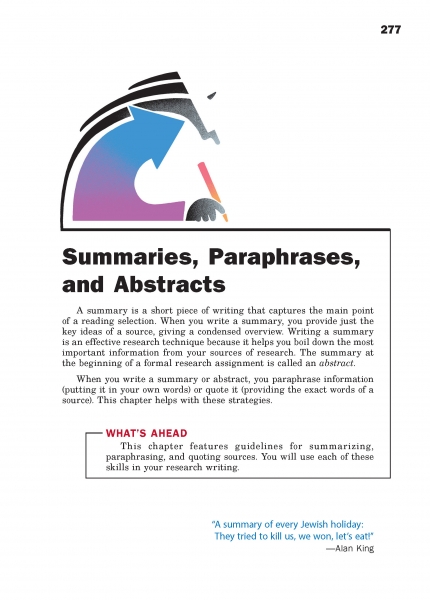Page 277 from

Start-Up Activity
Display Einstein's famous letter to FDR. Seek a student volunteer to read the letter aloud to your class. Afterward, ask a simple question: "What is the letter about?" Let multiple students respond, and then distinguish their responses. Did they use their own words? Did they cite exact words from the letter? Did they respond to one portion of the text or the whole thing?
Tell students that the question "what is this about" is the focus of every summary. Writing a summary requires students to use their own words and, in special occasions, a few exact words from the source to reveal the heart of the matter. This chapter introduces strategies for summarizing as well as paraphrasing and quoting. Students will use all three strategies to write an effective abstract.
Think About It
“Vigorous writing is concise. A sentence should contain no unnecessary words, a paragraph no unnecessary sentences.”
—William Strunk, Jr.

Start-Up Activity
Display Einstein's famous letter to FDR. Seek a student volunteer to read the letter aloud to your class. Afterward, ask a simple question: "What is the letter about?" Let multiple students respond, and then distinguish their responses. Did they use their own words? Did they cite exact words from the letter? Did they respond to one portion of the text or the whole thing?
Tell students that the question "what is this about" is the focus of every summary. Writing a summary requires students to use their own words and, in special occasions, a few exact words from the source to reveal the heart of the matter. This chapter introduces strategies for summarizing as well as paraphrasing and quoting. Students will use all three strategies to write an effective abstract.
Think About It
“Vigorous writing is concise. A sentence should contain no unnecessary words, a paragraph no unnecessary sentences.”
—William Strunk, Jr.

